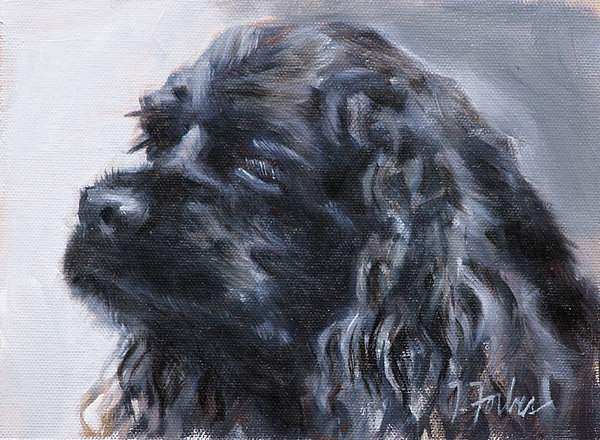
He was the first dog of any breed to win advanced titles in field, conformation, and obedience, and his name was Dual Ch. Millers Esquire, CDX, a parti color American Cocker Spaniel whelped in 1938. These days, the breed is most often seen in a show ring dripping in coat, but the docked tail is a telltale sign of what the American Cocker was bred to do, and that was to hunt. The breed has been hunting ever since it came over on the Mayflower.
This smallest of the Spaniel breeds quarters the ground ahead of the gun with a fast, snappy pace, covering ground within gun range. His job: Flush birds out of heavy cover, such as bramble and briars. Because he did this with a “characteristic incessant, merry action of the tail,” docking was a means to prevent greater injury and pain.
Among hunting enthusiasts, some will say (arguably) that the only true hunting line of American Cocker Spaniels left in America is the Dungarvan line and a woman named Mabel Brady Garvan. The bloodline dates back to the 1930s when Ch. Millers Esquire won those titles. Mabel Brady Garvan’s son and daugher-in-law, Peter and Billie, kept her bloodline going, and now their daughter, Noel Cacchio, maintains it. In an interview with Gundog Magazine in 2019, Noel said, “We live in New York so we hunt the Adirondacks a lot for grouse. They are perfect for thick cover, and thrive in the grouse and woodcock thickets. I’ve got a brother who is a huge duck hunter, so we started hunting waterfowl with him. Our ACs hunt and retrieve them without any problems too. They hunt everything.”
Others who have hunted over an American Cocker point out that the breed is a “comfortable dog” with which to hunt because they stay close and work at a pleasant pace (read: There’s no sprinting to catch up to the dog). The breed relies heavily on ground scent, and sorting out bird trails makes the breed ideal for heavy cover, but since the dogs tend not to weight over 30 pounds, they get through that cover easily. The ease with which they move through dense brush means they do well in hot weather because they don’t have to work as hard. While the Cocker’s size makes it harder for them to handle large birds like Canada Geese, mallards, and pheasant, hunt trainers nevertheless find ACs fun to train because they learn quickly. American cockers work a field differently the English Springer and the English Cocker in that they are all business, very focused, and thus more thorough.
Image: American Cocker Spaniel by Isabel Forbes
http://isabelforbes.com
http://fineartamerica.com/profiles/isabel-forbes.html?tab=artworkgalleries&artworkgalleryid=50481

When I was in high school in the late 1940s, I hunted an American Cocker. He was a grandson of a Sandspring bench champion and son of a dog with a half dozen bench points. He was a little black dog with a head full of brains. I could teach him to do almost anything. Basic obedience was a snap and I really didn’t teach him to hunt – ne just hunted, flushed pheasants as a 10 month old pup! He weighed 27 0r 28 pounds, his front legs were bowed, his skull was broad and when he hit scent, his tail wagged his whole backend! I have seen him hunt a field after two big English Pointers went through it and he would flush the pheasants they missed. His name was Kelly, named after a WW2 American hero, “Commando Kelly”! He was a housedog but my mother decreed that he must stay in the kitchen – so he did (almost). He would lay in a hall that ran beside the kitchen with his head in the living room – as close to me as he could get. He became a kennel dog after I left for college and died shortly thereafter. That was over 60 years ago but I still remember him fondly, think of him often. I have had many dogs since then: English Cockers, Springers, Labs and Pointers but he remains closest to my heart. I’m 88 now but I can close my eyes and see that little black dog, jumping up on me, his little short tail wagging a mile a minute. I love you Kelly, always have, always will. Wait for me my friend, we’ll be together soon!
Harry, what a lovely note you’ve shared with us, a loving tribute to a fine dog. We can picture him just as you painted him with your words! For what it’s worth, we firmly believe that Kelly is waiting for you, as are our own dogs whom we’ve loved over the years. We’re not exactly sure how this will work since not every one of those dogs “worked well and played with others,” but if we’re headed “up,” at that point, then in heaven, everyone gets along. Thank you for starting our day with on a marvelous note.